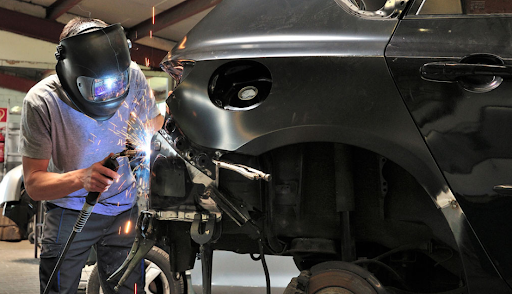Vehicle accidents are an unfortunate reality for many drivers, and understanding collision repair is essential for effectively managing the aftermath. This comprehensive guide aims to clarify the collision repair process, providing vehicle owners with the knowledge needed to navigate repairs, insurance claims, and overall vehicle maintenance.
What is Collision Repair?
Collision repair refers to the process of restoring a vehicle to its pre-accident condition following a collision or accident. This can involve a variety of services, including bodywork, paint refinishing, and mechanical repairs. The goal of collision repair is not only to fix visible damages but also to ensure the vehicle operates safely and efficiently.
The Collision Repair Process
Initial Assessment
The collision repair process begins with an initial assessment by a qualified technician. This assessment typically includes:
- Visual Inspection: Technicians examine the vehicle’s exterior for visible damage.
- Mechanical Assessment: This step involves checking internal components that may have been affected, such as the frame, suspension, and engine.
- Diagnostic Testing: Advanced diagnostic tools may be used to detect hidden issues, especially in modern vehicles equipped with electronic systems.
Repair Plan
After the assessment, the repair shop will develop a detailed repair plan that outlines the necessary services, parts required, and estimated costs. This plan should be discussed with the vehicle owner to ensure transparency and understanding of the repairs needed.
Insurance Communication
Navigating insurance claims can be complex. It’s essential to communicate with your insurance provider to understand your coverage and how it applies to collision repair. Provide your insurer with the repair plan, and they may send an adjuster to review the vehicle and authorize the repairs. Understanding your policy will help avoid unexpected expenses during the repair process.
Types of Collision Repairs
Body Repairs
Body repairs are one of the most visible aspects of collision repair. These repairs focus on fixing the exterior of the vehicle, including:
- Dent Removal: Technicians use specialized tools to remove dents and dings from the vehicle’s body.
- Panel Replacement: Severely damaged panels may need to be replaced entirely.
- Paint Refinishing: After repairs are completed, the vehicle will often need a fresh coat of paint to match the original color and finish.
Frame Straightening
In more severe collisions, the vehicle’s frame may become bent or misaligned. Frame straightening is a critical aspect of collision repair that involves using hydraulic equipment to realign the frame to factory specifications. This ensures the vehicle’s structural integrity and safety.
Mechanical Repairs
Collision repair is not limited to bodywork; mechanical repairs may also be necessary. These can include:
- Suspension Repairs: Damage to the suspension can affect the vehicle’s handling and safety.
- Engine Repairs: In some cases, an accident can cause internal engine damage that requires repair or replacement.
Choosing a Collision Repair Shop
Selecting the right collision repair shop is crucial for ensuring quality repairs. Consider the following factors when choosing a repair facility:
Certification and Experience
Look for shops that are certified by recognized organizations such as the Inter-Industry Conference on Auto Collision Repair (I-CAR) or the National Institute for Automotive Service Excellence (ASE). These certifications indicate that the technicians have received specialized training and adhere to industry standards.
Reviews and Recommendations
Check online reviews and ask for recommendations from friends or family. Customer feedback can provide valuable insights into the quality of service and workmanship at a repair shop.
Warranty on Repairs
Reputable collision repair shops often offer warranties on their work. Inquire about the warranty terms to ensure that you have recourse should issues arise after the repairs are completed.
Preventative Measures
Regular Maintenance
Regular maintenance can help prevent the need for collision repair in the first place. This includes routine inspections, tire rotations, and brake checks. Keeping your vehicle in good condition can reduce the risk of accidents and extend its lifespan.
Defensive Driving
Practicing defensive driving techniques can also help avoid accidents. Being aware of your surroundings, anticipating the actions of other drivers, and maintaining a safe distance from vehicles can significantly reduce the likelihood of a collision.
Conclusion
Understanding collision repair is vital for vehicle owners, especially in the event of an accident. From the initial assessment to selecting the right repair shop, knowledge of the collision repair process can empower drivers to make informed decisions. By prioritizing regular maintenance and adopting safe driving practices, vehicle owners can minimize the risks associated with accidents, ensuring their vehicles remain in optimal condition. With the right information and support, navigating the collision repair process can be a manageable and stress-free experience.

